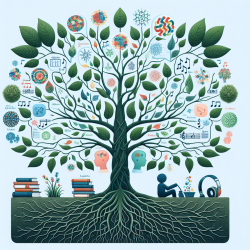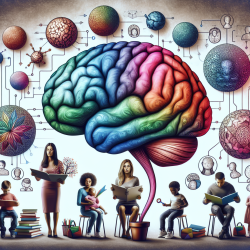Introduction
In today's fast-paced academic environments, students often find themselves juggling multiple responsibilities, leading to high levels of stress and anxiety. A recent study titled There Is No Performance, There Is Just This Moment: The Role of Mindfulness Instruction in Promoting Health and Well-Being Among Students at a Highly-Ranked University in the United States sheds light on the potential of mindfulness to alleviate these pressures. This blog explores how educators and practitioners can implement mindfulness strategies to enhance student well-being and foster a supportive learning environment.
The Power of Mindfulness
Mindfulness, as defined by Jon Kabat-Zinn, involves "paying attention in a particular way; on purpose, in the present moment, and non-judgmentally." The study highlights how mindfulness-based stress reduction (MBSR) programs can provide students with tools to manage stress, improve focus, and enhance overall well-being. By cultivating present-moment awareness, students learn to step back from the constant pressure to perform and embrace a more balanced approach to their academic and personal lives.
Key Findings
- Students experienced a reduction in stress and anxiety, leading to improved mental health and coping mechanisms.
- Mindfulness practices helped students gain perspective, prioritize tasks, and manage their time more effectively.
- Participants reported increased productivity and a healthier relationship with their academic responsibilities.
- The program fostered a culture of acceptance and non-judgment, countering the pervasive culture of perfectionism.
Implementing Mindfulness in Educational Settings
Educators and practitioners can take several steps to integrate mindfulness into their schools:
- Introduce Mindfulness Programs: Develop and offer MBSR programs tailored to the needs of students. These programs can include meditation, yoga, and mindful breathing exercises.
- Create a Supportive Environment: Encourage an academic culture that values well-being and balance over constant achievement and competition.
- Provide Resources and Training: Equip teachers and staff with the necessary training to facilitate mindfulness practices and support students in their mindfulness journey.
- Promote Regular Practice: Encourage students to incorporate mindfulness into their daily routines, helping them develop resilience and a positive outlook.
Encouraging Further Research
While the study provides valuable insights, further research is needed to explore the long-term effects of mindfulness on student well-being and academic performance. Practitioners are encouraged to conduct their own studies and share findings to contribute to the growing body of evidence supporting mindfulness in education.
Conclusion
Mindfulness offers a promising pathway to enhance student well-being and create a more supportive academic environment. By embracing the present moment and letting go of the constant drive for perfection, students can achieve greater balance and fulfillment in their educational journey.
To read the original research paper, please follow this link: There Is No Performance, There Is Just This Moment: The Role of Mindfulness Instruction in Promoting Health and Well-Being Among Students at a Highly-Ranked University in the United States.










